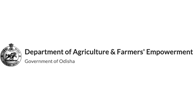The GCF project, titled "Ground water recharge and Solar Micro Irrigation to ensure food security and enhance resilience in vulnerable tribal areas of Odisha", aims to enhance climate resilience and promote sustainable development in the state of Odisha, India.
Aim/Primary Objective of the GCF Project: The primary objective of this project is to enhance groundwater recharge in the community ponds through structural adaptation measures and use of solar pumps for micro-irrigation to ensure water security and food security in the vulnerable areas of the state of Odisha, India.
Sub-Objectives of the Project: The sub-objectives to achieve its primary aim:
- Augmentation of groundwater recharge to improve water table and water quality conditions in rural areas (Gram Panchayat) through the adoption of recharge systems in existing village ponds/tanks.
- Sustainability of groundwater-based schemes (domestic/irrigation) at the Gram Panchayat level, including the revival of defunct community tanks used as drinking water sources for reducing vulnerability.
- Use of solar pumps for irrigation as a component of a low-emission, climate-resilient crop planning strategy.
- Increased climate-resilient sustainable development.
- Enhanced livelihoods and increased resilience for the most vulnerable people, communities, and regions.
- Increased resilience of health and well-being, and food and water security.
- Promotion of a sustainable strategy for energy security through low-emission crop water management.
- Create a knowledge base for enabling policy and regulatory framework for market transformation
Components and Activities of the GCF Project: The project is structured into seven main components, each with specific outputs and activities:
Integration of Solar Pumps for Irrigation
- Activity 3.1.1: Criteria Development through consultation This involves consulting stakeholders to develop criteria for identifying pilot sites for solar pump installations. Factors like groundwater availability, formation of Water Users Associations (WUAs), and ownership are considered.
- Activity 3.1.2: Identification of tank based on criteria & Sample Site visit for verification This activity focuses on identifying tanks for solar pump installation based on developed criteria, followed by sample site visits for verification.
- Activity 3.2.1: Cost of Identification of Supplier This activity covers the cost of identifying suitable suppliers for the 1,000 solar pumps.
- Activity 3.2.2: Design of Contract This involves designing the contracts for the procurement of solar pump sets, ensuring transparency and adherence to procurement policies.
- Activity 3.2.3: Creation of procurement plan This activity focuses on creating a comprehensive procurement plan for the 1,000 solar pumps.
- Activity 3.3.1: 1000 solar pump installation and baseline audit This is the core activity of installing 1,000 solar pumps and conducting a baseline energy audit for each installed pump.
- Activity 3.4.1: 2000 village level para-professionals certification in operation and maintenance of pumps This activity involves training and certifying 2,000 village-level para-professionals, particularly women, in the operation and maintenance of solar pumps, panels, and batteries.
- Activity 3.5.1: Energy saving report generation This activity focuses on generating reports documenting the energy savings achieved from the installed solar pumps, based on post-installation audits and monitoring.
Output 3.1: Identification criteria for 1000 solar pump installation developed
Output 3.2: Procurement plan and standard supplier contract for 1000 solar pumps developed
Output 3.3: 1000 solar pump installed and baseline audit completed
Output 3.4: 2000 village level para-professionals are certified in operation and maintenance of pumps
Output 3.5: Energy saving report generated











